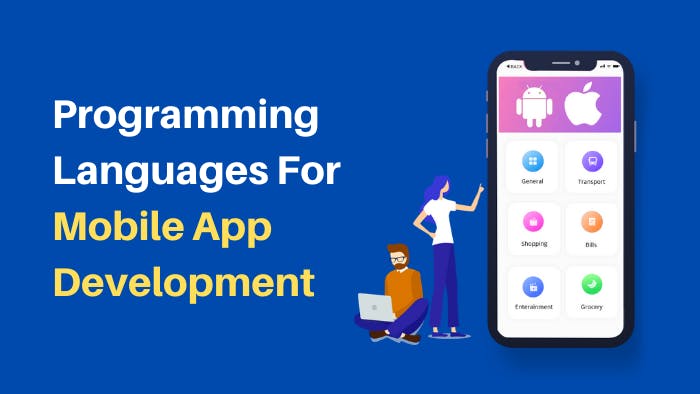Use of Programming Languages in Mobile Phones and App Development
Use of Programming Languages
Introduction
The omnipresence of mobile phones in our daily lives is undeniable, and behind their sleek interfaces and powerful functionalities lies the intricate world of programming languages. This article aims to delve into the profound impact of programming languages on mobile phones, examining their working mechanisms, adaptability, role in digital evolution, and the myriad benefits they bring to our fingertips.

I. Working Mechanism: The Code Beneath the Screen
A. Mobile Operating Systems
Android relies on Java and Kotlin.
iOS employs Swift and Objective-C.
B. App Development
Developers use specific languages (e.g., Java for Android, Swift for iOS) to define app functionality.
Programming languages facilitate the creation and execution of feature-rich applications.
II. User Interface Development: Crafting Seamless Experiences
A. Android Development
XML is commonly used to describe UI layout and appearance.
Ensures visually appealing, responsive, and intuitive graphical elements.
B. iOS Development
Interface Builder relies on Swift and Objective-C.
Similar emphasis on visually appealing and responsive UI elements.
III. Hardware Interaction: Unlocking Device Capabilities
Mobile applications interact with hardware components (camera, GPS, sensors).
Languages like C and C++ facilitate seamless hardware integration.
IV. Cross-Platform Development: Efficiency and Reach
Cross-platform frameworks (e.g., React Native, Flutter, Xamarin) leverage programming languages.
Streamlines development, reduces time and effort, ensures consistent user experience.
V. Performance Optimization: Enhancing User Experience
Programming languages play a crucial role in optimizing code for better performance.
Efficient algorithms, memory management, and coding practices contribute to smooth-running apps.
VI. Adaptability: Coding for an Ever-Changing Landscape
A. Updates and Maintenance
Programming languages provide flexibility for adapting code to new features and fixing bugs.
Ensures compatibility with evolving mobile devices and operating systems.
B. Cross-Platform Compatibility
Programming languages enable cross-platform compatibility, reaching a broader audience.
Adaptable code without extensive modifications.
C. Security Measures
Programming languages implement robust security measures.
Encrypting data, securing communication, and authentication mechanisms safeguard user privacy.
VII. Digital Evolution: Shaping the Future of Mobile Technology
A. Emergence of New Languages
Swift (2014) and Kotlin (2017) revolutionized iOS and Android development, respectively.
Reflects the industry's commitment to innovation.
B. AI and Machine Learning Integration
Programming languages provide the foundation for AI and ML integration in mobile apps.
TensorFlow facilitates the incorporation of machine learning models.
C. IoT Connectivity
Programming languages enable mobile apps to communicate with IoT devices.
Extends the reach of mobile technology beyond traditional boundaries.
VIII. Benefits of Programming Languages in Mobile Phones
A. Innovation and Creativity
Empowers developers to turn creative ideas into functional applications.
Fosters continuous innovation in the app development landscape.
B. Efficiency and Performance
Well-optimized code results in efficient and high-performance mobile applications.
Enhances overall satisfaction and usability.
C. Global Reach
Cross-platform capabilities enable global audience reach.
Expands market potential and ensures global accessibility.
D. Security and Privacy
Robust security features contribute to user trust.
Applications can securely handle sensitive data, protecting against cyber threats.
E. Adaptability
Ensures mobile applications remain relevant amidst evolving technological landscapes.
Facilitates updates, maintenance, and compatibility with new devices and technologies.
IX. Learning Programming Languages for a Bright Future
Various options for learning programming languages:-
Uncodemy provides Java and Python Course in Greater Noida, Patna, Gorakhpur, Agra, Ludhiana, Delhi, Noida, Kolkata, Mumbai, Chennai, Dehradun, Faridabad, Gurgaon and all other cities in India.
Online platforms like Coursera, Udemy, and edX offer similar courses.
Coding bootcamps provide immersive, short-term programs.
Traditional education institutions offer degree programs.
Self-motivated learners can access numerous free resources for independent skill-building.
X. Summary
In conclusion, programming languages are the backbone of mobile technology, influencing app development, UI design, and hardware interaction. Their adaptability ensures relevance in a dynamic landscape, contributing to innovation, efficiency, global reach, and enhanced security. Learning programming languages becomes a key factor in shaping a bright future in the ever-evolving field of mobile technology.